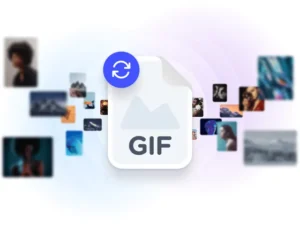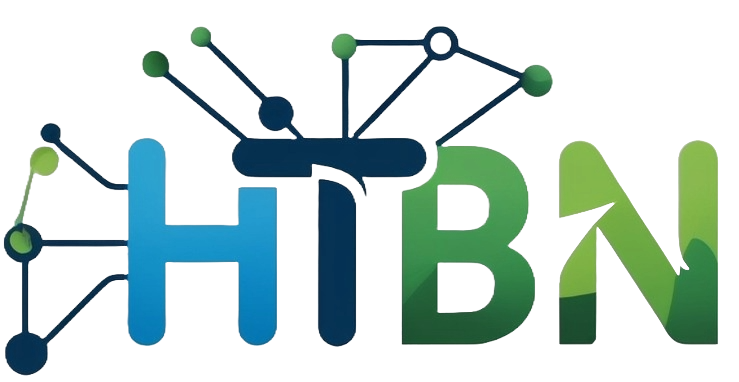Introduction to Multi-Frame TIFF and GIF Formats
The TIFF (Tagged Image File Format) is a versatile and widely supported image format that often serves as the preferred choice for storing high-quality images. Multi-frame TIFF files, specifically, are capable of holding multiple images within a single file, making them suitable for applications such as scanning and archiving. They commonly retain high levels of detail and can accommodate various color depths and compression methods, benefiting industries like photography, publishing, and medical imaging where clarity is crucial. The ability to encapsulate multiple frames in one file makes multi-frame TIFFs a powerful tool for organizing and managing images efficiently.
On the other hand, GIF (Graphics Interchange Format) is particularly recognized for its support of animations and transparency, making it a staple in web graphics. GIF files are limited to a palette of 256 colors, which can result in smaller file sizes compared to other formats, but might compromise image quality in color-rich images. Despite these limitations, the animation capabilities of GIFs have led to their widespread popularity for simple animations and graphics across various platforms, making them particularly suitable for online and digital marketing purposes.
In contemporary programming practices, the need for converting multi-frame TIFF to GIF in cross-platform .NET environments has become increasingly relevant. This conversion not only facilitates better accessibility of files across different systems but also enhances the user experience in applications where animated content may be required. As developers work on various platforms, understanding the characteristics of these file formats and their respective use cases is critical. The process of conversion can significantly streamline workflows, thus ensuring the interoperability of images between applications that utilize different graphic standards.
Understanding Cross-Platform .NET Environments
Cross-platform .NET environments refer to development frameworks that allow applications to run on multiple operating systems without requiring significant code modifications. One of the primary tools for achieving this in .NET development is .NET Core, a robust framework that enables developers to create applications compatible with Windows, macOS, and Linux. Another notable framework is Xamarin, which is tailored for building mobile applications that can operate seamlessly across various platforms like iOS and Android.
The importance of cross-platform compatibility in image processing cannot be overstated, particularly when converting multi-frame TIFF to GIF in cross-platform .NET environments. By utilizing these frameworks, developers can ensure that their image processing applications function effectively regardless of the underlying operating system. This flexibility is essential in today’s diverse technological landscape, where users may have varying device preferences.
Utilizing cross-platform development approaches offers several advantages. One significant benefit is the reduction in development time and costs, as a single codebase can serve multiple platforms. Additionally, developers can leverage familiar tools and languages, streamlining the learning curve and promoting productivity. However, there are challenges to consider. Performance discrepancies may arise due to differences in how various operating systems handle processes, and debugging can become more complex. Furthermore, not every feature available in a specific OS may be fully supported or may require additional effort to implement across all platforms.
In summary, understanding cross-platform .NET environments is crucial for developers seeking to create versatile applications. By strategically employing frameworks like .NET Core and Xamarin, they can efficiently tackle challenges associated with converting multi-frame TIFF to GIF while ensuring their applications maintain broad compatibility. For developers, recognizing the trade-offs within different approaches is essential for making informed decisions that align with their project objectives.
Step-by-Step Guide to Converting Multi-Frame TIFF to GIF
Converting multi-frame TIFF to GIF in cross-platform .NET environments involves several essential steps, from setting up the necessary libraries to executing the conversion process. This guide is aimed at developers with varying experience levels, ensuring accessibility and clarity in the process.
First and foremost, ensure you have the right libraries to facilitate the conversion. Libraries such as ImageSharp and SkiaSharp are highly recommended for handling image processing tasks in a cross-platform .NET environment. Both libraries provide extensive capabilities for image manipulation, and they can easily manage TIFF and GIF formats.
Once your library of choice is installed, the next step is to load the multi-frame TIFF file. Use the appropriate methods provided by the library to read the TIFF file’s frames. For example, in ImageSharp, you can utilize the method to access the TIFF frames, looping through to retrieve each individual frame. Below is a simplified code snippet:

After retrieving the frames, the next step involves initializing a new GIF encoder. With the frameworks mentioned, you can specify properties like frame delay and looping options. For instance, utilizing SkiaSharp allows for greater control and customization when creating your GIF file. Be mindful of the output size, as multi-frame TIFF images can become quite large when converted. Here’s an example of how to save the GIF:
Finally, always test your generated GIF thoroughly to catch any potential issues, such as frame rate discrepancies or quality loss. By following these steps for converting multi-frame TIFF to GIF in cross-platform .NET environments, along with the recommended tools and code samples, developers can efficiently complete the image conversion process while avoiding common pitfalls.
Best Practices and Optimization Tips
When converting multi-frame TIFF to GIF in cross-platform .NET environments, several best practices can help optimize the image quality, maintain manageable file sizes, and enhance overall performance during the conversion process. The first step is to carefully consider the quality settings of the TIFF images prior to conversion. Resampling or adjusting the color depth can significantly impact the output GIF file size and quality. When dealing with images that include transparency, it is advisable to choose an appropriate color palette that balances quality with file size, ensuring that the final GIF remains visually appealing.
Managing file sizes is another crucial consideration. GIF files can grow substantially when multiple frames are involved; therefore, employing optimizations such as removing redundant frames or reducing the resolution of the images can help keep the sizes in check. Developers should also explore various compression algorithms available in the .NET framework, which can reduce the size of the GIF without compromising on the image’s quality. While the target platforms may influence the choice of algorithms, the objective should always be to achieve an optimal compression ratio.
Common challenges during the conversion process include dealing with color fidelity and frame rate adjustments. To troubleshoot issues related to color discrepancies, consider conducting tests with different color palettes and configurations. Frame rate can also be adjusted to ensure smooth playback on various platforms. Having a fallback mechanism when errors occur during conversion is vital to address necessary adjustments without halting the entire process. Moreover, utilizing robust libraries like ImageMagick or other tools specifically designed for .NET, can provide deeper insights and functionalities for refining image processing capabilities.
Further reading on image processing techniques and tools in the .NET environment can provide developers with valuable resources to enhance their workflow. Comprehensive guides, community forums, and tutorials are excellent avenues for expanding knowledge and addressing complex challenges commonly faced during conversion tasks.
May Be You Also Read

